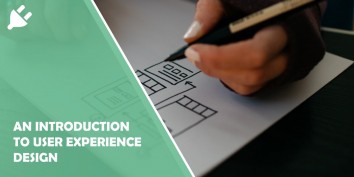Websites and applications are progressively becoming complex owing to the rapid penetration and innovation in…
In today’s era of technology, user experience (UX) design is crucial to the success of any product. The design must be intuitive and easy-to-use, catering to every type of user. Universal and cognitive-friendly UX design is a solution that caters to the needs of all users, regardless of their age or ability level.
This article will explore how pivot tables and grids can enhance the universal and cognitive-friendliness of UX design. We will discuss what these elements are, their significance in UX design, and how they can help create an inclusive experience for all users. Additionally, we will delve into some practical examples where pivot tables and grids have been effectively implemented to improve usability for various user groups.
What is Universal and Cognitive-Friendly UX Design?
Universal and cognitive-friendly UX design is an approach to user experience (UX) design that aims to create digital products that are accessible and usable by everyone, regardless of their age, abilities, or disabilities. This type of UX design considers the diversity of users and their needs while designing digital interfaces.
Pivot tables and grids are two essential tools used in universal and cognitive-friendly UX design. A pivot table is a data summarization tool used to reorganize, sort, group, count, filter, or total data stored in a spreadsheet or database table. Pivot tables help designers analyze large datasets quickly and easily during the research phase of the UX design process.
On the other hand, grids refer to how designers organize content visually on a webpage or interface. Grids help with consistency in layout across different pages within the same website or application. They also aid in balancing visual elements such as text blocks, images, buttons with white space for better readability for all users. Overall pivot tables and grids allow designers to create more efficient designs that cater to all potential users’ needs by providing clear information placement for ease-of-use regardless of any limitations they may have when using websites or applications online.

The Importance of Pivot Tables and Grids in UX Design
Pivot tables and grids are crucial tools in UX design as they help designers organize, analyze, and present complex data in a simplified manner. These tools allow designers to create user-friendly interfaces that are cognitive-friendly and easy to use. The importance of pivot tables and grids lies in their ability to provide structure and clarity to the information presented.
In creating universal UX designs, pivot tables and grids enable designers to create interfaces that cater to people with varying levels of cognitive abilities. By organizing complex data into manageable chunks, users can easily understand the information presented. Additionally, these tools facilitate accessibility for individuals with disabilities such as visual or cognitive impairments.
Overall, pivot tables and grids play a critical role in creating effective UX designs that prioritize usability, accessibility, and ease of understanding. They enable designers to present complex data in an organized manner while ensuring that all users can interact with the interface regardless of their abilities or limitations.
Understanding Universal Design Principles
Universal Design Principles are essential in creating accessible and inclusive experiences that cater to all users regardless of their physical or cognitive abilities. The concept of Universal Design is rooted in the idea that products, services, and environments should be designed with everyone in mind, including those with disabilities. By incorporating these principles into UX design practices, designers can create interfaces that are easy to use for everyone and help people perform tasks efficiently.
Some examples of Universal Design Principles include flexibility, simplicity, perceptibility, tolerance for error, low physical effort required to interact with the product or service. When designing digital interfaces such as pivot tables and grids usability testing is key to ensure they are universally usable.
In conclusion, understanding Universal Design Principles is pivotal if we intend to create user-friendly interfaces accessible by everyone. By implementing these principles from the outset of any design project will ensure that users have a seamless experience across multiple devices without encountering barriers created due to lack of accessibility features.

Applying Cognitive-Friendly Design Principles
Pivot tables and grids are essential design elements in developing a cognitive-friendly user experience. When creating these designs, consider the principles of cognitive load theory to enhance users’ ability to process and understand information effectively. Limit the amount of information displayed on each screen, organize it logically, and provide visual cues for easy navigation.
Incorporating universal design principles also makes your pivot tables and grids more accessible to a broader audience. Use color contrast ratios that meet accessibility standards, provide alternative text for images, and ensure that your layout is easy to navigate using assistive technologies like screen readers or keyboard navigation.
Ultimately, applying cognitive-friendly design principles when designing pivot tables and grids can improve usability by reducing user frustration while increasing engagement with your content. By incorporating universal design principles as well, you can create an inclusive experience that everyone can enjoy regardless of their abilities.
Benefits of Using Pivot Tables and Grids in UX Design
Pivot tables and grids are powerful tools that can be used to analyze and manipulate data in an efficient manner. When it comes to UX design, these tools can be incredibly beneficial in helping designers create interfaces that are both universal and cognitive-friendly. For starters, pivot tables allow designers to easily sort through large amounts of data, which is particularly useful when conducting user research or analyzing user behavior.
Additionally, pivot tables can help designers identify patterns and trends within the data, which can then be used to inform design decisions. Grids, on the other hand, help ensure consistency across a design by providing a framework for organizing content. This not only makes it easier for users to navigate a site or application but also helps reduce cognitive load by presenting information in a logical and intuitive way.
Overall, the benefits of using pivot tables and grids in UX design cannot be overstated. By facilitating the analysis of data and providing a framework for organizing content, these tools enable designers to create interfaces that are both effective and user-friendly.

Examples of Successful Implementation
One example of successful implementation of universal and cognitive-friendly UX design is the website for the Metropolitan Museum of Art. The website features a clear and organized layout, with easy-to-read font sizes and colors that are accessible to all users, including those with visual impairments. The pivot tables used to filter search results on the site are intuitive and user-friendly, allowing visitors to easily navigate through thousands of artworks based on various criteria.
Another successful example can be seen in the mobile banking app developed by Capital One. The app uses grids to display account balances, transaction histories, and other financial data in a way that is easy for users to understand at a glance. The use of bold typography and contrasting colors helps make important information stand out, while also being accessible to users with different levels of visual acuity. Overall, these examples demonstrate how universal and cognitive-friendly UX design can enhance user experience across a variety of platforms and industries.
Conclusion: Improving User Experience with Pivot Tables and Grids
In conclusion, the use of pivot tables and grids can greatly improve user experience in data-heavy applications. These tools allow users to easily sort, filter, and analyze large amounts of information with minimal effort. Pivot tables, in particular, offer a level of flexibility that is unmatched by other data visualization techniques.
By implementing these design elements into your application or website, you can create a more universal and cognitive-friendly UX design. Users will appreciate the ability to customize their views and quickly find what they need without feeling overwhelmed or frustrated. As always, it’s important to keep user needs at the forefront of any design decisions and continually iterate based on feedback to ensure optimal usability.






